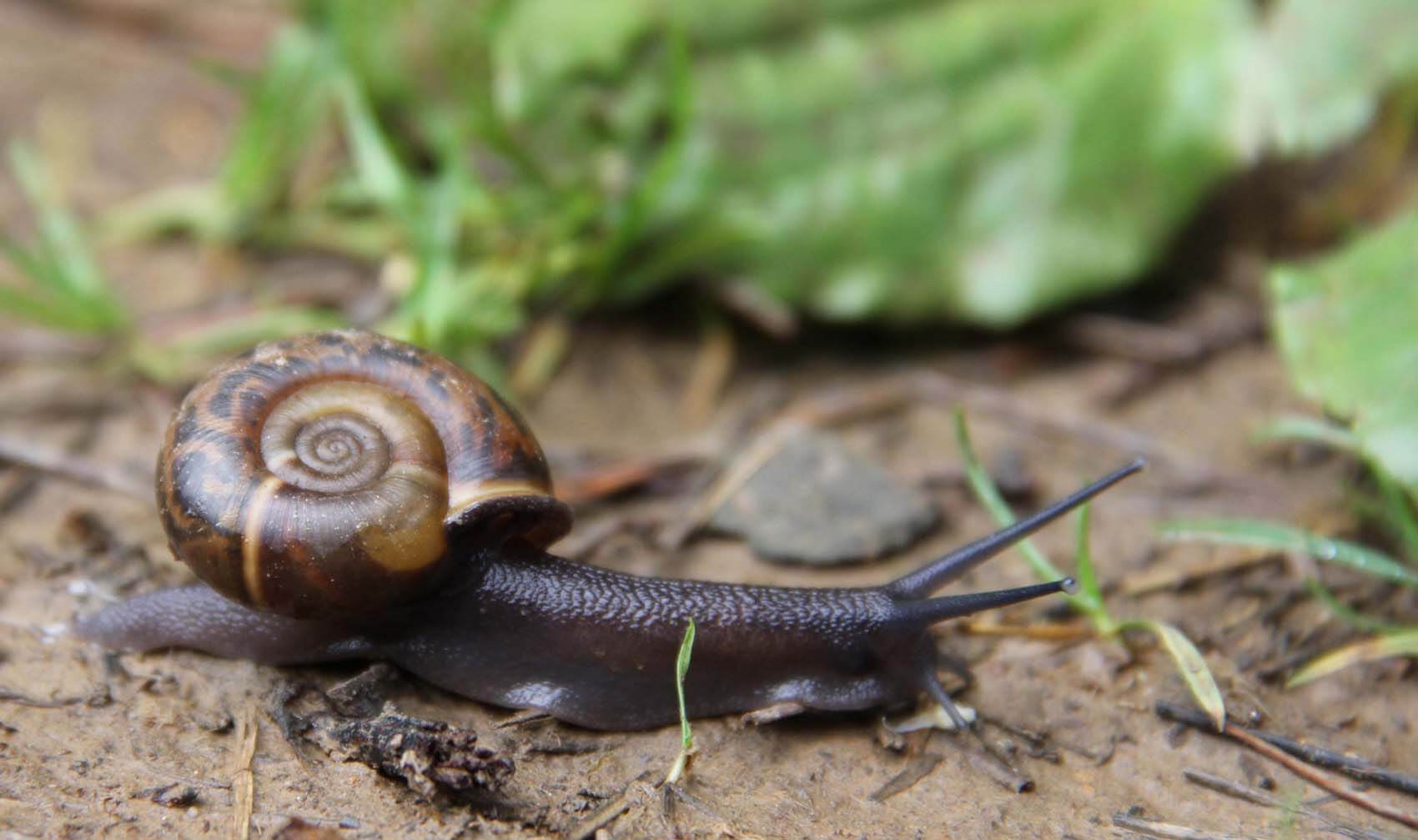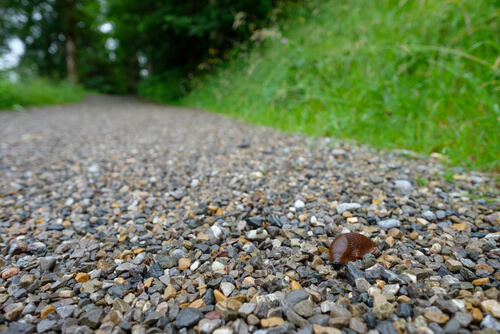Quimper Snail: Characteristics and Habitat


Written and verified by the biologist Paloma de los Milagros
The Quimper snail is scientifically known as Elona quimperiana. Traditionally it has been included in the family Xanthonichidae, but according to the evidence found in recent studies, experts now consider that it should be in a new family, called Elonidae.
The first specimens of this peculiar species were found in Quimper, although they were misclassified. It wasn’t until they were found again in the Basque Country that their populations were well described. Here we’ll tell you more about this curious little animal that isn’t only found on French soil.
Highlights about Elona quimperiana
The Quimper snail has a dark brown body in contrast to a fragile, flattened shell, three centimeters (1.2 inches) in diameter and one centimeter (0.4 inches) in height. It’s composed of a spiral of five or six turns and has a brownish hue, with yellowish shades, on which a pattern of darker spots is arranged. This design gives it its other name: “spotted snail”.
It camouflages very well with the environment, so it isn’t always easy to distinguish it. However, on closer inspection, it is possible to appreciate how striking the pattern of its shell is. Some might even describe it as “tabby”.

The Quimper snail is a species of gastropod linked to the Atlantic climate. It’s named after the town of Quimper, capital of the Breton Finistère.
Food
The diet of the Quimper snail consists mainly of roots and mushroom mycelia, i.e. the vegetative part of fungi. However, on some occasions, it’s possible for this animal to practice coprophagy and necrophagy.
Habits and behavior
Like other species, these snails aren’t very active animals and, except on rainy days, they have nocturnal habits. It should be noted that this leisurely behavior intensifies during the winter months, when they carry out an incomplete hibernation in small galleries. Also, during the warmer summer months, they maintain moments of dormancy.
Life cycle
According to observations carried out in Brittany, this species is characterized by two reproductive periods, coinciding with spring and autumn.
After the first two years of life, they reach sexual maturity, and then begin to lay their eggs in subway cavities or in places such as holes in stumps or under stones.
Moreover, as with other snails, some of their main predators are hedgehogs, birds such as thrushes, and certain medium-sized beetles.
Habitat and conservation status
Its presence isn’t limited to the French area. It also extends throughout the Atlantic biogeographical region of the Iberian Peninsula, from Galicia to Navarre, as well as southern La Rioja.
Quimper’s snail has a predilection for deciduous beech, oak or chestnut forests, where humidity is almost permanent. It can also occur in riparian forests or shady countryside where water is continuously available.
Among the biophysical factors that directly condition the adequate maintenance of the species are the maintenance of large forest stands and the presence of stones, stumps, and branches where they can take refuge.
The Quimper’s snail is a species of recognized interest within the European Union, which is why it’s included in Annexes II and IV of the Habitat Directive 92/43/EEC and in Appendix II of the Bern Convention.

Currently, the International Union for Conservation of Nature (IUCN) considers its conservation risk to be of “minor concern“, due to its wide distribution.
The wide geographic dispersion, formerly associated with an artificial introduction, now seems to be justified by the extinction of intermediate populations during the glacial period.
This last hypothesis is genetically supported, since the sequencing of mitochondrial DNA shows the existence of two different lineages. On the one hand, the Quimper snail extended from Galicia to Cantabria – to which the population of Brittany belongs – and, on the other hand, the lineage restricted to the population of the Basque Country.
An animal living in a delicate situation
Due to the destruction of its habitat, the Quimper snail is currently in a difficult situation. There aren’t many specimens and their populations are of low density. If you find one in the field, it’s best to leave it alone and try not to disturb it.
All cited sources were thoroughly reviewed by our team to ensure their quality, reliability, currency, and validity. The bibliography of this article was considered reliable and of academic or scientific accuracy.
- Fernández, C. (2007). Asturnatura. Elona quimperiana (Férussac, 1821). Recuperado de https://www.asturnatura.com/especie/elona-quimperiana.html
- Gómez, B.J; Madeira, M.J. (2012). Sociedad Española de Malacología. Elona quimperiana. Recuperado de https://www.miteco.gob.es/es/biodiversidad/temas/espacios-protegidos/elona_quimperiana_tcm30-196960.pdf
- Grupo de investigación de Sistemática, Biogeografía y Dinámica de Poblaciones de la Universidad del País Vasco. (2017). Estudio del estado de conservación de Elona Quimperiana (Mollusca: gastropoda) en las zonas de especial conservación de Álava y Bizkaia: Zec Gorbeia (ES2110009) y Zec Arkamo-Gibijo-Arrastaria (ES2110004). Recuperado de http://www.araba.eus/cs/Satellite?blobcol=urldata&blobheader=application%2Fpdf&blobheadername1=Content-disposition&blobheadername2=pragma&blobheadervalue1=inline%3B+filename%3D&blobheadervalue2=public&blobkey=id&blobtable=MungoBlobs&blobwhere=1224094972824&ssbinary=true
- Vialatte, A., Guiller, A., Bellido, A., & Madec, L. (2008). Phylogeography and historical demography of the Lusitanian snail Elona quimperiana reveal survival in unexpected separate glacial refugia. BMC Evolutionary Biology, 8(1), 1-13.
- Raven, J. H. Juvenile shells of Elona quimperiana (Férussac, 1821)(Gastropoda: Elonidae). Elona, 3, 48-49.
- Gómez Moliner, B.J. & Seddon, M.B. (2017). Elona quimperiana. The IUCN Red List of Threatened Species 2017: e.T7658A85564390. https://dx.doi.org/10.2305/IUCN.UK.2017-3.RLTS.T7658A85564390.en.
This text is provided for informational purposes only and does not replace consultation with a professional. If in doubt, consult your specialist.